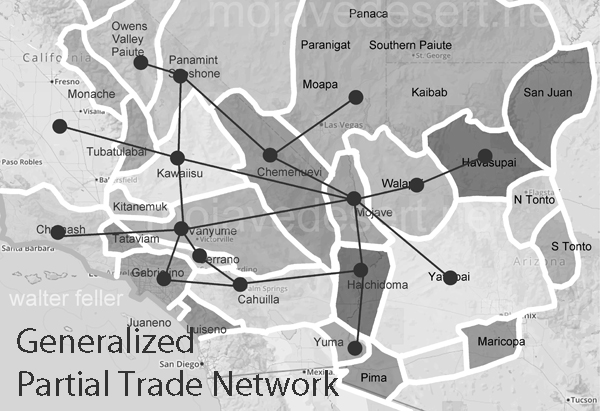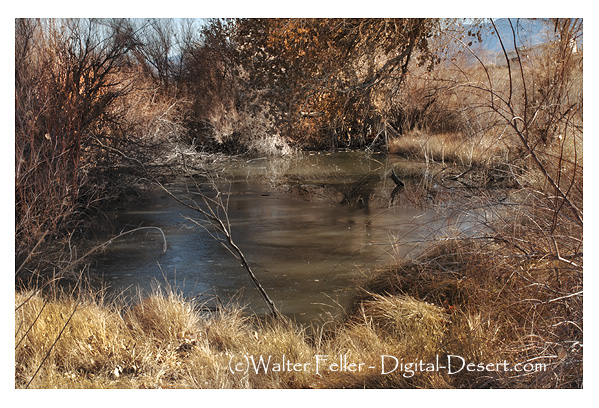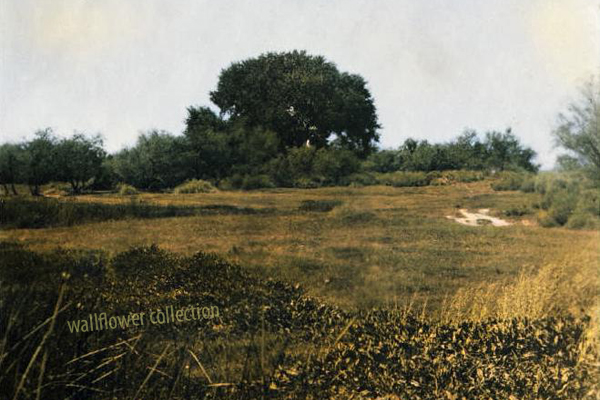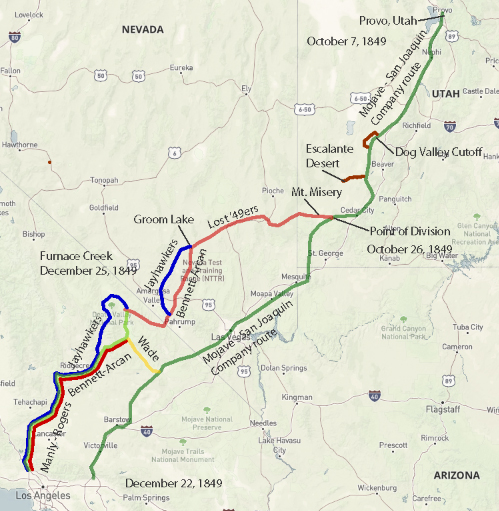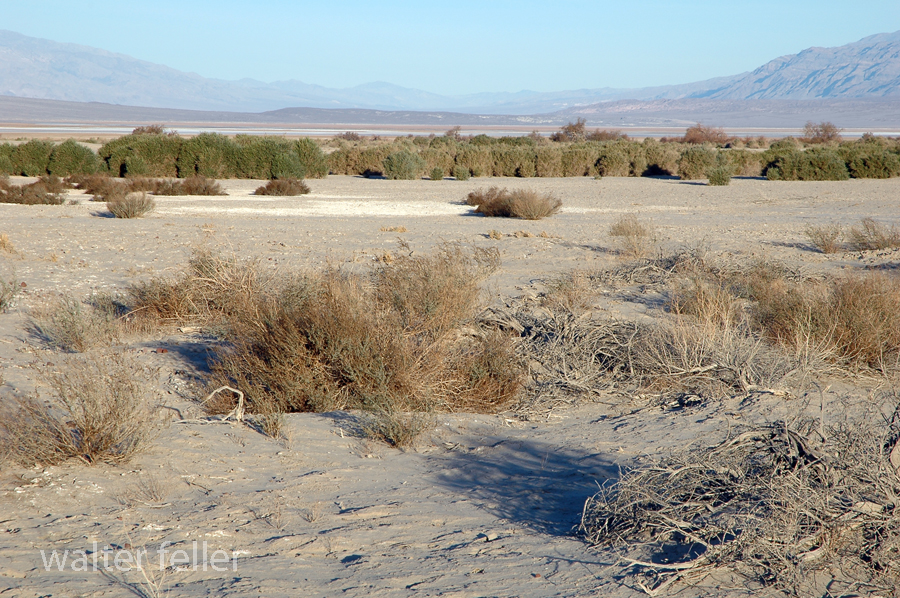Mormon Hogback, Sanford Pass
In the early 1850s, long wagon trains of Mormon pioneers crept down from the high desert into the mouth of Cajon Pass, hoping to reach the fertile San Bernardino Valley beyond. They soon found themselves at a natural choke point – a narrow ravine called Coyote Canyon, now known as Crowder Canyon – where sheer rock walls and a jumbled creek bed made passage nearly impossible. The first wagons through had to be disassembled: wheels removed and rolled by hand, cargo shifted onto a mule’s back, and wagon beds dragged piece by piece over the worst boulders. Early travelers remembered this grueling process, and the Mormon settlers who followed in 1851 likely endured the same ordeal to get their covered wagons through the upper Cajon Pass.
But adversity often sparks ingenuity. Not long after, some enterprising pioneers scouted a detour a few miles to the west of the treacherous canyon. There, a high spine of land offered a way around the worst narrows. This route ran along a slender ridge – a true hogback that rose above the canyon – and though it added a few extra miles, it spared travelers from having to lug their wagons through Coyote Canyon’s rock-strewn gauntlet. The Mormon colonists heading to Southern California in those years eagerly embraced this alternate path. In fact, by the early 1850s, they had established a wagon trail atop that ridge, which would later be known as the Mormon Hogback in honor of the many Latter-day Saint families who had blazed it.
In 1850, a veteran freighter named William T. B. Sanford took it upon himself to hack a rough wagon road along this western Cajon route. Sanford’s road departed the old Spanish Trail near present-day Victorville, climbed onto the flanks of Baldy Mesa, and then edged down through the West Cajon Valley, eventually descending toward a cluster of towering sandstone outcrops. Those pale rocks marked a kind of gateway at the foot of the hogback trail. They would later be known as the Mormon Rocks – named for the Mormon pioneers who camped beneath them after braving the ridge and finally emerging into the open Cajon wash.
Traveling the Mormon Hogback was still a heart-pounding adventure. The ridge was narrow and the drop-offs unforgiving; in places, the trail was scarcely wider than a wagon itself. The ascent to the summit was so steep that teams often had to “double up,” hitching multiple teams of oxen or mules to a single wagon. One contemporary account describes wagons needing as many as 32 mules in harness to tug a heavy load up the incline. On the way back down, drivers would lock their wagon wheels and skid the first several yards, the wooden rims dragging like sleds to slow the descent. The air filled with the shouts of teamsters and the groan of brake chains as each wagon inched along the hogback’s crest. It was perilous, yes, but for a time, this high road was the only practical way for settlers and supply wagons to get through Cajon Pass intact.
Despite these dangers, the ridge route quickly became the preferred wagon road. Sanford and others made further upgrades over the years. In 1855, workers even cut into the mountainside to create a new alignment about a mile and a half west of the original track. This was known as the Sanford Cutoff, which bypassed the most challenging section of the hogback. The grades were gentler than before, though still outrageously steep – some stretches tilted at a 30% incline, straining both beast and brake. Nevertheless, from the mid-1850s up until 1861, virtually every wagon train bound to or from Southern California chose to tackle the Mormon Hogback via Sanford’s route rather than risk the old rocky canyon. For the Mormon settlers in particular, this ridge road was a vital lifeline, allowing them to bring wagons loaded with families, lumber, and provisions into their new settlements without having to unload and reassemble everything at Cajon Pass.
The reign of the Mormon Hogback came to an end in the 1860s. In 1861, a local pioneer named John Brown Sr. partnered with two associates to finally tame the original canyon route itself. Capitalizing on a surge of travelers during a nearby gold rush, Brown’s company widened and improved the old trail through Crowder (Coyote) Canyon, smoothing out the worst boulders and drop-offs. They built a proper wagon road right through Cajon Pass’s eastern narrows and set up toll gates to collect fees from anyone using this new shortcut. Travelers gladly paid a few dollars rather than face the old hogback or haul their wagons apart again. With the opening of John Brown’s toll road – shorter and far less harrowing – the Mormon Hogback’s importance swiftly faded. The new turnpike through the canyon became the main gateway between the desert and the coast. Before long, even stagecoaches and mail wagons were rumbling through Crowder Canyon instead of teetering along the ridge.
Although the wagon ruts along the Mormon Hogback have long since faded into the brush, its legacy remains etched in the landscape and lore of Cajon Pass. The very name “Mormon Rocks” for those sandstone sentinels is a reminder of the emigrants who passed that way in the 1850s. Modern highways and railroads now carry traffic through Cajon Pass, roughly tracing the corridors that pioneers like the Mormons and John Brown once opened up. In fact, the historic Mormon wagon trail itself wound through the same valley of curious rock formations that visitors see today. Next time you drive north from San Bernardino and glimpse the weathered cliffs and crags of Cajon Pass, imagine a line of canvas-topped wagons winding down a dusty mountain ridge. That was the Mormon Hogback – a vital, if temporary, wagon road born of necessity and determination, now a nearly forgotten chapter of the westward migration to Southern California.
